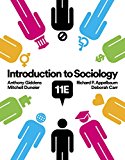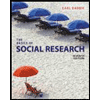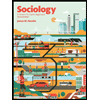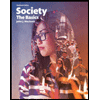writing assigment
docx
keyboard_arrow_up
School
Lone Star College System, Woodlands *
*We aren’t endorsed by this school
Course
1306
Subject
Sociology
Date
Apr 3, 2024
Type
docx
Pages
12
Uploaded by jaqgonzalez1994
Use of Force Issues in Law Enforcement
Department members shall use only that force which is objectively reasonable. Unreasonable force is that force that is unnecessary or excessive given the totality of the circumstances. Unreasonable force is prohibited. The use of unreasonable force is subject to discipline and/or prosecution.
Currently, the criminal justice system's three largest issues are police retention and recruitment, lack of resource parity between prosecution and public defenders, and its public perception. Currently, police recruitment and retention are arguably the largest problem facing the criminal justice system.
FORCE PREVENTION PRINCIPLES A. Department members shall only use that level of force which is objectively reasonable, and force should be used as a last resort. Department members should endeavor to de-escalate confrontations through tactical communications, warnings, increasing distance from the threat, and other common-sense methods preventing or minimizing the use of force whenever possible.
B. When force must be used, officers should endeavor to use restraint techniques trained by the department when possible and use only the level of force necessary for the situation.
C. While state law clearly states that law enforcement officers have no duty to retreat if otherwise authorized to use force, this department considers that a temporary tactical disengagement for purposes of preparing a plan or awaiting resources may be the best option in our efforts to accomplish our mission without
the use of force. This can only be accomplished when there is no immediate threat to others and the officers can safely withdraw to a position of safety.
D. Officers should consider whether a subject's lack of compliance is a deliberate attempt to resist or an inability to comply based on factors including, but not limited to:
• Medical conditions • Mental impairment • Developmental
disability • Physical limitation • Language barrier • Drug interaction • Behavior crisis
UNREASONABLE FORCE
Department members shall use only that force which is objectively reasonable. Unreasonable force is that force that is unnecessary or excessive given the totality of the circumstances. Unreasonable force is prohibited. The use of unreasonable force is subject to discipline and/or prosecution.
PROHIBITED FORCE The following uses of force are prohibited unless circumstances justify the use of deadly force. A. head strike(s) with an impact weapon; B. deliberately or recklessly
striking an individual's head against a hard, fixed object; C. from a standing position, kicking an individual with a foot while the individual is on the ground; D. Kneeing an individual in the head, or deliberately or recklessly causing their head to strike the ground or hard, fixed object; E. The application of a choke holds, or carotid-control holds, except when the officer reasonably believes such holds are the only means of protecting himself or another from serious bodily injury or death, and then only if other departmental approved methods are not available or
are impractical. F. The use of flashlights as batons except when the officer reasonably believes such holds are the only means of protecting himself or another from serious bodily injury or death, and then only if other departmental approved methods are not available or are impractical. Use of a flashlight or similar weapon, depending on the manner of use, may be deemed a use of deadly
force.
Excessive force is when a police officer uses more force than is reasonably necessary. The Fourth Amendment of the United States Constitution, as well as police department policies, protect citizens from excessive force by police.
What are the uses of force in policing?
Law enforcement officers should use only the amount of force necessary to mitigate an incident, make an arrest, or protect themselves or others from harm. The levels, or continuum, of force police use include basic verbal and physical restraint, less-lethal force, and lethal force.
The Problem
The specific problem that uses of force policy seeks to address is the increases in incidents of officer-involved injuries/deaths (excessive force). The nature of the problem stems from a history of interactions between police and citizens. Specifically, interactions between police and racial minorities has been an ongoing
struggle. Strain has always existed between racial minorities and authoritative majorities. According to Carter, since the 1960’s, police-citizen relationships have been a swinging pendulum. From the Civil Rights Movement, Vietnam protests, and the War on Drugs, police-citizen relationships have gone from trust to mistrust and back again.
A second aspect to the nature of the problem is that there is no universally agreed
upon definition of the use of force. This can create a host of problems related to policy, training, and implementation, if no one truly knows how to define the concept. Therefore, police departments may have different types of training/techniques based on how they define use of force.
Citizens also feel they are being excessively targeted or unjustly stopped by police officers. This history of interactions has in a way set the precedent for minority citizen and police relationships. Thus, we end up with strained relationships and actions seem impulsive. This results in instances of police use of force that result in injury or death. Although this directly affects minority citizens, it also effects everyone else. Incidents of excessive use of force strain police relationships with all citizens. They also call into question police legitimacy.
This strained relationship has become apparent in recent decades, as the number of high-profile incidents of police use of force reported in the news has increased. Incidents such as Michael Brown, Jeremy Mardis, Alton Sterling, and Walter Scott have called into question current use of force standards. Based on reports from the Washington Post, there were 991 people shot and killed by police in 2015. Of those 991, 94 people were unarmed.
There are numerous factors working to cause this problem. The first cause is poor
or inadequate training. Although many police departments have implemented use of force policies and training, there is no universally applied curriculum of
Your preview ends here
Eager to read complete document? Join bartleby learn and gain access to the full version
- Access to all documents
- Unlimited textbook solutions
- 24/7 expert homework help
training. Therefore, the content, quality, and duration of the training may differ depending on the department. There could be several issues occurring here, such
as not enough training, poor quality training, or omission of certain types of training (Phillips, 2015).
Poor or inadequate training could also involve not being trained in interactions with certain types of people or for certain situations. For example, people suffering from mental illness. Since the deinstitutionalization of mental health facilities, police have had increasing interactions with people suffering from mental illness. In many cases, these officers are not trained in how to interact with these individuals, which increases the risk for an officer-involved injury.
Another cause of the problem may be police culture. A department itself may be known for being “tough on crime” (both in the figurative and literal sense). Therefore, it may have more incidents of use of force. Many people are also aware of the “blue wall” or “blue code of silence.” That is, officers keeping within the group in terms of what happens both on and off the job. It is also the notion that officers will protect other officers. In this case, the police culture is pervasive and can be damaging to the department. This may apply to officers who believe they are above the law or who believe that their badge protects them.
The last cause, while not a direct cause, results in substantial public attention and scrutiny. Increased media and public attention have aided in further straining police-citizen relations. As mentioned earlier, it also puts increased pressure on police departments and calls into question their legitimacy. How a news outlet reports on an officer-involved incident can have drastic effects on how that officer or police department is viewed by the public. If the news outlet paints the officer or department in a negative light, the public only sees the negative aspects. As the saying goes, “If it bleeds, it leads.”
Previous efforts to reduce the incidents of officer-involved injuries or death have resulted in mixed results. According to Stickle (2009) and Michael et al (2009), efforts such as increases in training and education are generally beneficial, but the
content, quality, and duration of the training affects how beneficial the training is. Therefore, even if a department implements new use of force training, if it is of poor content, quality, or duration, it tends to have little or negligible impact on the problem. Other efforts such as the use of force continuum also can be
beneficial, but again it depends on the quality of the continuum (Bolger, 2015). For example, most departments use a linear design (kind of like a number line), that shows the different levels of use of force and when they may be appropriate. Other departments use matrix-style designs that allow multiple factors to be considered when deciding on what force is appropriate (Terrill et al, 2011). Therefore, there are differing designs when it comes to how use of force is taught.
From a theoretical perspective, use of force policy can be explained using Routine Activities theory and Self-Control theory. As Gottfredson and Hirschi suggest, low self-control directly contributes to whether or not a person commits a crime. In this case, police officers who have low self-control are more likely to act impulsively and therefore are at a higher chance of using excessive force. However, looking through a Routine Activities lens, the officer would need a suitable target in the absence of a capable guardian. The officer becomes an ineffective guardian as they become the likely offender, although low self-control seems to fit use of force policy and excessive force more easily. According to Ariel (2015), the likelihood of force being used significantly decreased when police officers were wearing body cameras. This may suggest that, in the lens of Routine Activities, the body camera may act as a capable guardian. Therefore, when an officer is wearing a body camera, they are less likely to use excessive force because they know they are under “supervision”. Body-worn cameras have become a hot topic in recent years, and with more research, they may be found to
be more beneficial in reducing use of force incidents.
Effectiveness
The research has shown mixed results in terms of how use of force policies influences the use of excessive force. Factors including the type of training and encounter characteristics appear to be the most correlated with decisions of use of force (Bolger, 2015; Stickle, 2016; Terrill, et al. 2016). In terms of training, the amount of training received, and pre-employment screening was found to be strongly associated with lower use of force complaints (Stickle, 2016). Therefore, the research would suggest that the content, quality, and duration of the training is important in implementing effective use of force policy. In addition, Smith et al. (2009) and Taylor et al. (2009) found that the additional use of chemical sprays and CED-devices resulted in reductions in suspect-injury. This would suggest that
the types of devices used in force training (chemical sprays, CED-devices, etc.) have some impact on the likelihood of officer-involved injuries or death. Research by Bolger (2015) suggests that the characteristics of the encounter and the potential target are most correlated with use of force decisions. Characteristics such as seriousness of offense, resistance of suspect, force occurring during an arrest or during citizen conflict, or when more officers are present were most related to use of force decisions. This is not surprising in that these are the obvious factors that officers must consider when deciding to use force. The factors that increase the likelihood of harm increase the likelihood that
an officer may use force.
Bolger’s (2015) research also suggests that the suspect’s characteristics impact an officer’s decision to use force. He found that those who were male, minorities, and lower class were more likely to have force used against them. He also found that the suspect’s demeanor (if they appeared intoxicated or aggressive) also influenced an officer’s decision to use force. Additionally, Andersen et al. (2016) found that the use of realistic (real-world) scenarios produced positive benefits in officer performance. This type of training included realistic scenarios such as suicide and mental problems.
The specific problem that the use of force policy seeks to address is the increases in incidents of officer-involved injuries/deaths (excessive force). The nature of the
problem stems from a history of interactions between police and citizens. Specifically, interactions between police and racial minorities have been an ongoing struggle. Strain has always existed between racial minorities and authoritative majorities. According to Carter, since the 1960’s, police-citizen relationships have been a swinging pendulum. From the Civil Rights Movement, Vietnam protests, and the War on Drugs, police-citizen relationships have gone from trust to mistrust and back again.
A second aspect to the nature of the problem is that there is no universally agreed
upon definition of the use of force. This can create a host of problems related to policy, training, and implementation, if no one truly knows how to define the concept. Therefore, police departments may have different types of training/techniques based on how they define use of force.
Your preview ends here
Eager to read complete document? Join bartleby learn and gain access to the full version
- Access to all documents
- Unlimited textbook solutions
- 24/7 expert homework help
Citizens also feel they are being excessively targeted or unjustly stopped by police officers. This history of interactions has in a way set the precedent for minority citizen and police relationships. Thus, we end up with strained relationships and actions seem impulsive. This results in instances of police use of force that result in injury or death. Although this directly affects minority citizens, it also effects everyone else. Incidents of excessive use of force strain police relationships with all citizens. They also call into question police legitimacy.
This strained relationship has become apparent in recent decades, as the number of high-profile incidents of police use of force reported in the news has increased. Incidents such as Michael Brown, Jeremy Mardis, Alton Sterling, and Walter Scott have called into question current use of force standards. Based on reports from the Washington Post, there were 991 people shot and killed by police in 2015. Of those 991, 94 people were unarmed.
There are numerous factors working to cause this problem. The first cause is poor
or inadequate training. Although many police departments have implemented use of force policies and training, there is no universally applied curriculum of training. Therefore, the content, quality, and duration of the training may differ depending on the department. There could be several issues occurring here, such
as not enough training, poor quality training, or omission of certain types of training (Phillips, 2015).
Poor or inadequate training could also involve not being trained in interactions with certain types of people or for certain situations. For example, people suffering from mental illness. Since the deinstitutionalization of mental health facilities, police have had increasing interactions with people suffering from mental illness. In many cases, these officers are not trained in how to interact with these individuals, which increases the risk for an officer-involved injury.
Another cause of the problem may be police culture. A department itself may be known for being “tough on crime” (both in the figurative and literal sense). Therefore, it may have more incidents of use of force. Many people are also aware of the “blue wall” or “blue code of silence.” That is, officers keeping within the group in terms of what happens both on and off the job. It is also the notion that officers will protect other officers. In this case, the police culture is pervasive
and can be damaging to the department. This may apply to officers who believe they are above the law or who believe that their badge protects them.
The last cause, while not a direct cause, results in substantial public attention and scrutiny. Increased media and public attention have aided in further straining police-citizen relations. As mentioned earlier, it also puts increased pressure on police departments and calls into question their legitimacy. How a news outlet reports on an officer-involved incident can have drastic effects on how that officer or police department is viewed by the public. If the news outlet paints the officer or department in a negative light, the public only sees the negative aspects. As the saying goes, “If it bleeds, it leads.”
Previous efforts to reduce the incidents of officer-involved injuries or death have resulted in mixed results. According to Stickle (2009) and Michael et al (2009), efforts such as increases in training and education are generally beneficial, but the
content, quality, and duration of the training affects how beneficial the training is. Therefore, even if a department implements new use of force training, if it is of poor content, quality, or duration, it tends to have little or negligible impact on the problem. Other efforts such as the use of force continuum also can be beneficial, but again it depends on the quality of the continuum (Bolger, 2015). For example, most departments use a linear design (kind of like a number line), that shows the different levels of use of force and when they may be appropriate. Other departments use matrix-style designs that allow multiple factors to be considered when deciding on what force is appropriate (Terrill et al, 2011). Therefore, there are differing designs when it comes to how use of force is taught.
From a theoretical perspective, use of force policy can be explained using Routine Activities theory and Self-Control theory. As Gottfredson and Hirschi suggest, low self-control directly contributes to whether a person commits a crime. In this case, police officers who have low self-control are more likely to act impulsively and therefore are at a higher chance of using excessive force. However, looking through a Routine Activities lens, the officer would need a suitable target in the absence of a capable guardian. The officer becomes an ineffective guardian as they become the likely offender, although low self-control seems to fit use of force
policy and excessive force more easily. According to Ariel (2015), the likelihood of force being used significantly decreased when police officers were wearing body
cameras. This may suggest that, in the lens of Routine Activities, the body camera
may act as a capable guardian. Therefore, when an officer is wearing a body camera, they are less likely to use excessive force because they know they are under “supervision”. Body-worn cameras have become a hot topic in recent years,
and with more research, they may be found to be more beneficial in reducing use of force incidents.
Conclusion
The purpose of this paper was to examine use of force policy and how it may impact officer-involved injuries/deaths (excessive force). The research findings appear beneficial, but have some mixed results on the effectiveness of use of force training. The type of department, quality of training, and context of the encounters are the most important factors in use of force decisions.
Overall, it appears that the encounter characteristics of the interaction have the most impact on an officer’s decision to use force. Although not a surprising finding, it aids in guiding future use of force training techniques. This also relates back to the realistic (real-world) scenarios that would help officers prepare for varying encounter characteristics. According to Andersen (2016), by training officers more effectively in navigating different encounter characteristics, we may minimize the chance of an officer deciding to use more force than necessary.
Future research may also want to more closely examine how the “Blue Wall” or “Blue Code of Silence” influences decisions to use force. If police culture is found to be correlated with use of force decisions, it may make finding solutions a lot more difficult. As has been established, the policing culture is generally resistant to change. Therefore, changing police culture would make addressing the problem
that much harder. However, unless more research is done in relation to the “Blue Wall” and use of force, we cannot make any causal statements regarding the blue wall and use of force.
The implementation of a use of force database is also crucial for further understanding the use of force. As discussed earlier, the FBI recently began implementing a use of force collection database that collects national data on use of force incidents. Although the need for a national reporting system was
Your preview ends here
Eager to read complete document? Join bartleby learn and gain access to the full version
- Access to all documents
- Unlimited textbook solutions
- 24/7 expert homework help
discussed briefly by Koper (2016), the FBI was a step ahead of him and already began the implementation process. This database could provide researchers with a substantial amount of use of force data. With more data, we may conduct more research.
Based on the findings regarding chemical sprays and CED-devices, future research should examine more non-lethal options for police officers to use. Positive findings by Taylor et al. (2009), Smith et al. (2009), and Terrill et al. (2011) on the use of non-lethal devices would suggest that they are better alternatives to conventional use of force tactics. Therefore, more research should focus on the use of non-lethal devices and use of force.
Overall, current research findings are helpful in guiding future use of force policy and reduce the likelihood of an officer-involved injury. As discussed earlier, there are many factors that may contribute to the effectiveness of a use of force policy, many of which need to be considered when designing and implementing such a policy. Police departments adopt use of force policies and employ use of force continuums without fully understanding the use of force. This is why training and understanding the philosophy of use of force and how use of force interactions effects the public and police departments are crucial to effective policy. In addition, in future use of force policy design, some modifications regarding the type of training, quality of training, and focus of the training should occur. For example, officers should be trained on de-escalation techniques, mental health, how to better read the context of the situation, and how to communicate more effectively.
References
Andersen, J. P., Pitel, M., Weerasinghe, A., & Papazoglou, K. (2016). Highly Realistic
Scenario Based Training Simulates the Psychophysiology of Real World Use of Force Encounters: Implications for Improved Police Officer Performance. Journal of Law Enforcement, 5(4), 1- 13.
Ariel, B., Farrar, W., & Sutherland, A. (2015). The Effect of Police Body-Worn Cameras on Use of Force and Citizens' Complaints Against the Police: A Randomized Controlled Trial. Journal of Quantitative Criminology, 31(3), 509-535. doi:10.1007/s10940-014-9236-3
Atherley, L. T., & Hickman, M. J. (2014). Controlling Use of Force: Identifying Police Use of Excessive Force through Analysis of Administrative Records. Policing: A Journal of Policy & Practice, 8(2), 123-134 Bolger, P. (2015). Just Following Orders: A Meta-Analysis of the Correlates of American Police Officer Use of Force Decisions. American Journal of Criminal Justice, 40(3), 466- 492. doi:10.1007/s12103-014-9278-y
Carter, L. D. Police-Citizen Relationship. Retrieved from http://webs.wichita.edu/depttools/depttoolsmemberfiles/rcpi/Powerpoints/
WSURCPI%20Police%20Citizen%20Rela.ppt
Koper, C. S. (2016). Advancing Research and Accountability on Police Use of Deadly Force. Criminology & Public Policy, 15(1), 187-191. doi:10.1111/1745-
9133.12192
Smith, R. M., Kaminski J. R., Alpert, P. G., Fridell, A. L., MacDonald, J., Kubu, B. (2009). Multi-Method Evaluation of Police Use of Force Outcomes: Final Report to the National Institute of Justice. National Institute of Justice. Retrieved from https://www.ncjrs.gov/pdffiles1/nij/grants/231176.pdf
Phillips, S. W. (2015). Police recruit attitudes toward the use of unnecessary force. Police Practice & Research, 16(1), 51-64. doi:10.1080/15614263.2013.845942
Stickle, B. (2016). A National Examination of the Effect of Education, Training and Pre-Employment Screening on Law Enforcement Use of Force. Justice Policy Journal, 13(1), 1-15.
Taylor, B. Ph.D., Woods, D., Kubu, B., Koper, C. Ph.D., Tegeler, B., Cheney, J., Martinez, M., Cronin, J., Kappelman, K. (2009). Comparing Safety Outcomes in Police Use-Of-Force Cases for Law Enforcement Agencies That Have Deployed Conducted Energy Devices and A Matched Comparison Group That Have Not: A Quasi-Experimental Evaluation. National Institute of Justice. Retrieved from https://www.ncjrs.gov/pdffiles1/nij/grants/237965.pdf
Terrill, W., A. Paoline III, E., Ingram, J. (2011). Final Technical Report Draft: Assessing Police Use of Force Policy and Outcomes. National Institute of Justice. Retrieved from https://www.ncjrs.gov/pdffiles1/nij/grants/237794.pdf
FBI:UCR. National Use-of-Force Data Collection. Retrieved from https://ucr.fbi.gov/use-of force
.
Washington Post. Police Shootings 2015. The Washington Post
. Retrieved from https://www.washingtonpost.com/graphics/national/police-shootings/
Your preview ends here
Eager to read complete document? Join bartleby learn and gain access to the full version
- Access to all documents
- Unlimited textbook solutions
- 24/7 expert homework help
Related Documents
Recommended textbooks for you

Social Psychology (10th Edition)
Sociology
ISBN:9780134641287
Author:Elliot Aronson, Timothy D. Wilson, Robin M. Akert, Samuel R. Sommers
Publisher:Pearson College Div

Introduction to Sociology (Eleventh Edition)
Sociology
ISBN:9780393639407
Author:Deborah Carr, Anthony Giddens, Mitchell Duneier, Richard P. Appelbaum
Publisher:W. W. Norton & Company

The Basics of Social Research (MindTap Course Lis...
Sociology
ISBN:9781305503076
Author:Earl R. Babbie
Publisher:Cengage Learning

Criminalistics: An Introduction to Forensic Scien...
Sociology
ISBN:9780134477596
Author:Saferstein, Richard
Publisher:PEARSON

Sociology: A Down-to-Earth Approach (13th Edition)
Sociology
ISBN:9780134205571
Author:James M. Henslin
Publisher:PEARSON

Society: The Basics (14th Edition)
Sociology
ISBN:9780134206325
Author:John J. Macionis
Publisher:PEARSON
Recommended textbooks for you
 Social Psychology (10th Edition)SociologyISBN:9780134641287Author:Elliot Aronson, Timothy D. Wilson, Robin M. Akert, Samuel R. SommersPublisher:Pearson College Div
Social Psychology (10th Edition)SociologyISBN:9780134641287Author:Elliot Aronson, Timothy D. Wilson, Robin M. Akert, Samuel R. SommersPublisher:Pearson College Div Introduction to Sociology (Eleventh Edition)SociologyISBN:9780393639407Author:Deborah Carr, Anthony Giddens, Mitchell Duneier, Richard P. AppelbaumPublisher:W. W. Norton & Company
Introduction to Sociology (Eleventh Edition)SociologyISBN:9780393639407Author:Deborah Carr, Anthony Giddens, Mitchell Duneier, Richard P. AppelbaumPublisher:W. W. Norton & Company The Basics of Social Research (MindTap Course Lis...SociologyISBN:9781305503076Author:Earl R. BabbiePublisher:Cengage Learning
The Basics of Social Research (MindTap Course Lis...SociologyISBN:9781305503076Author:Earl R. BabbiePublisher:Cengage Learning Criminalistics: An Introduction to Forensic Scien...SociologyISBN:9780134477596Author:Saferstein, RichardPublisher:PEARSON
Criminalistics: An Introduction to Forensic Scien...SociologyISBN:9780134477596Author:Saferstein, RichardPublisher:PEARSON Sociology: A Down-to-Earth Approach (13th Edition)SociologyISBN:9780134205571Author:James M. HenslinPublisher:PEARSON
Sociology: A Down-to-Earth Approach (13th Edition)SociologyISBN:9780134205571Author:James M. HenslinPublisher:PEARSON Society: The Basics (14th Edition)SociologyISBN:9780134206325Author:John J. MacionisPublisher:PEARSON
Society: The Basics (14th Edition)SociologyISBN:9780134206325Author:John J. MacionisPublisher:PEARSON

Social Psychology (10th Edition)
Sociology
ISBN:9780134641287
Author:Elliot Aronson, Timothy D. Wilson, Robin M. Akert, Samuel R. Sommers
Publisher:Pearson College Div

Introduction to Sociology (Eleventh Edition)
Sociology
ISBN:9780393639407
Author:Deborah Carr, Anthony Giddens, Mitchell Duneier, Richard P. Appelbaum
Publisher:W. W. Norton & Company

The Basics of Social Research (MindTap Course Lis...
Sociology
ISBN:9781305503076
Author:Earl R. Babbie
Publisher:Cengage Learning

Criminalistics: An Introduction to Forensic Scien...
Sociology
ISBN:9780134477596
Author:Saferstein, Richard
Publisher:PEARSON

Sociology: A Down-to-Earth Approach (13th Edition)
Sociology
ISBN:9780134205571
Author:James M. Henslin
Publisher:PEARSON

Society: The Basics (14th Edition)
Sociology
ISBN:9780134206325
Author:John J. Macionis
Publisher:PEARSON